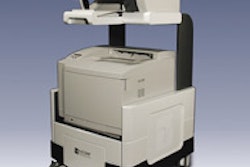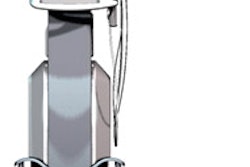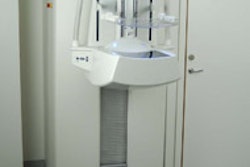The strengths and weaknesses of multiple modalities in breast imaging depend largely on the type of breast tissue involved. Ultrasound and MRI may be more sensitive to invasive cancer than mammography in dense breasts, but are of little value in fatty breasts. A combination of all three will mean a greater sensitivity to malignancy, but there are still some pitfalls, according to a report in Radiology.
A multi-institutional team prospectively evaluated the accuracy of mammography, clinical exam, ultrasound, and MRI for the preoperative assessment of breast cancer. The group was led by Dr. Wendie Berg, Ph.D., from the American College of Radiology Imaging Network in Lutherville, MD. Berg's co-authors are from institutions in Baltimore; Reston, VA; and Tampa, FL.
For this study, 111 consecutive women with known or suspected invasive breast carcinoma underwent bilateral mammography, clinical breast exam (CBE), bilateral whole-breast ultrasound, and 1.5-tesla MRI. The biopsy techniques included core-needle under ultrasound guidance, stereotactic breast biopsy, or MR-guided biopsy.
"For each imaging modality, a cancer was considered to be depicted successfully (true-positive) if it appeared to be suspicious for or highly suggestive of malignancy with that modality," the authors explained (Radiology, December 2004, Vol. 233:3, pp. 830-849).
The researchers found 177 malignant foci in 121 cancerous breasts, half of which were palpable. The median size of 139 invasive foci was 18 mm. Conservation surgery was performed in 54 breasts, and mastectomy was done in 67 breasts. Twenty-four mastectomies were performed based on MRI, while 19 were based on ultrasound results.
Breaking down the results by modality, mammographic sensitivity was 100% in fatty breasts, but that decreased to 45% in extremely dense breasts. Mammography was at its best for detecting invasive ductal carcinoma (81% sensitivity), the authors said.
Ultrasound showed higher sensitivity for invasive cancer than ductal carcinoma in situ (DCIS), identifying 47% of the cases. Sonography also turned in a higher sensitivity (94%) than mammography for invasive ductal carcinoma, as well as invasive lobular carcinoma (86%).
MRI showed higher sensitivity than mammography for all tumor types, and higher sensitivity than ultrasound for DCIS (95%). However, MR overestimated the extent of the tumor in 21% of cases.
With regard to false-negative results, mammography missed 32% (57/177) of malignant foci, ultrasound missed 17% (30/177), and MRI missed 5.6% (10/177). Looking at the type of cancer more closely, 33% of the mammographic misses were invasive lobular cancer. On sonography, 67% of the misses were instances of DCIS. MRI missed single cases of various cancer types. More notable was that the majority of these misses (90%) were in studies performed at 1 tesla or less.
Berg's group came to several conclusions with this study:
Cancer was nearly twice as prevalent in dense, or heterogeneously dense breasts, than in nondense breasts.
Invasive lobular cancer was too subtle to be seen on mammography; ultrasound was better for identifying this type of cancer, while MRI was useful for assessing disease extent.
The combination of mammography, CBE, and ultrasound depicted 93.2% of malignant foci, with MRI alone pinpointing the other 6.8%.
There is no cancer detection benefit of using ultrasound after MRI, although the modality is useful for guiding biopsies after MR imaging.
For most cases of DCIS and in fatty breasts, imaging beyond mammography was "problematic ... (the) addition of MR imaging carried a substantial risk of false-positive findings."
Finally, they stated that the combination of mammography, CBE, and MRI was more sensitive to malignancy than any other test alone or in combination. Pairing ultrasound with mammography was almost as effective as MRI alone, although sonography was of little value after MRI.
By Shalmali Pal
AuntMinnie.com staff writer
January 6, 2005
Related Reading
Breast US readers need more practice with postop changes, December 22, 2004
Breast imagers fare better with hands-on approach to screening ultrasound, December 17, 2004
ACRIN updates multiple breast cancer trials, April 15, 2004
Copyright © 2005 AuntMinnie.com



















